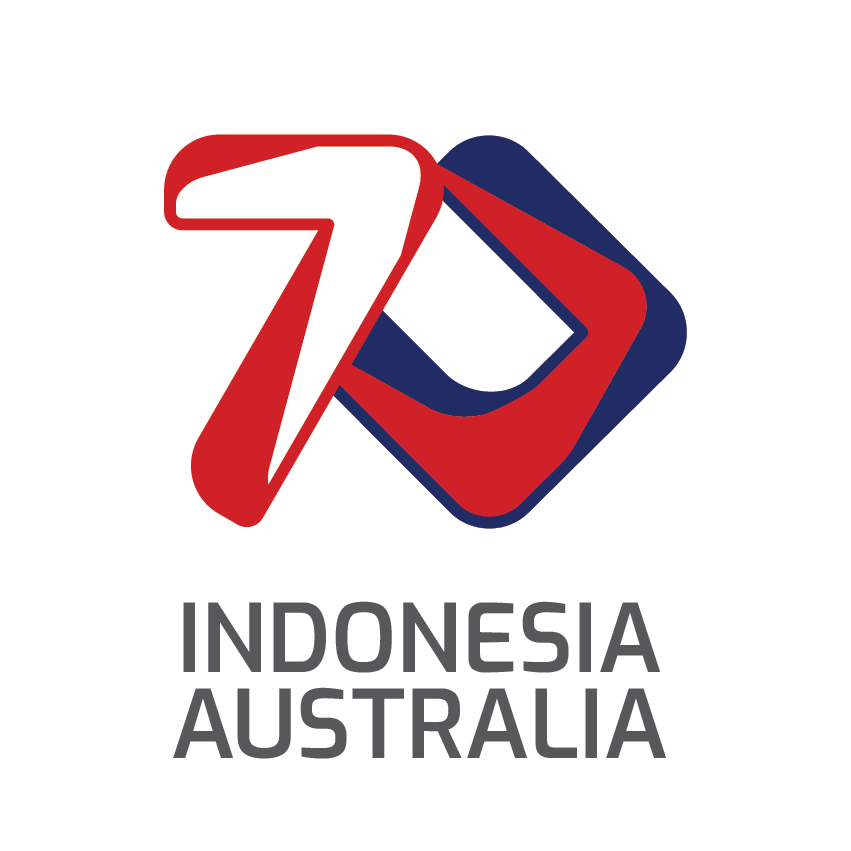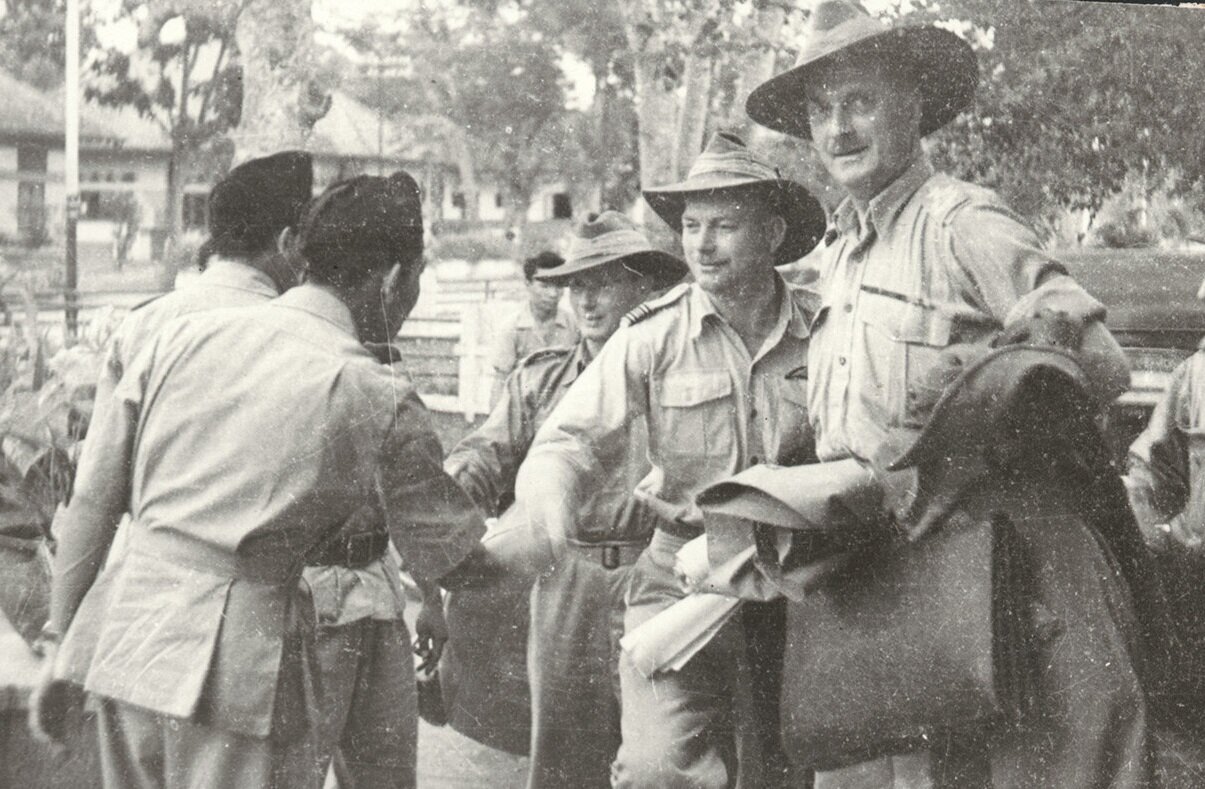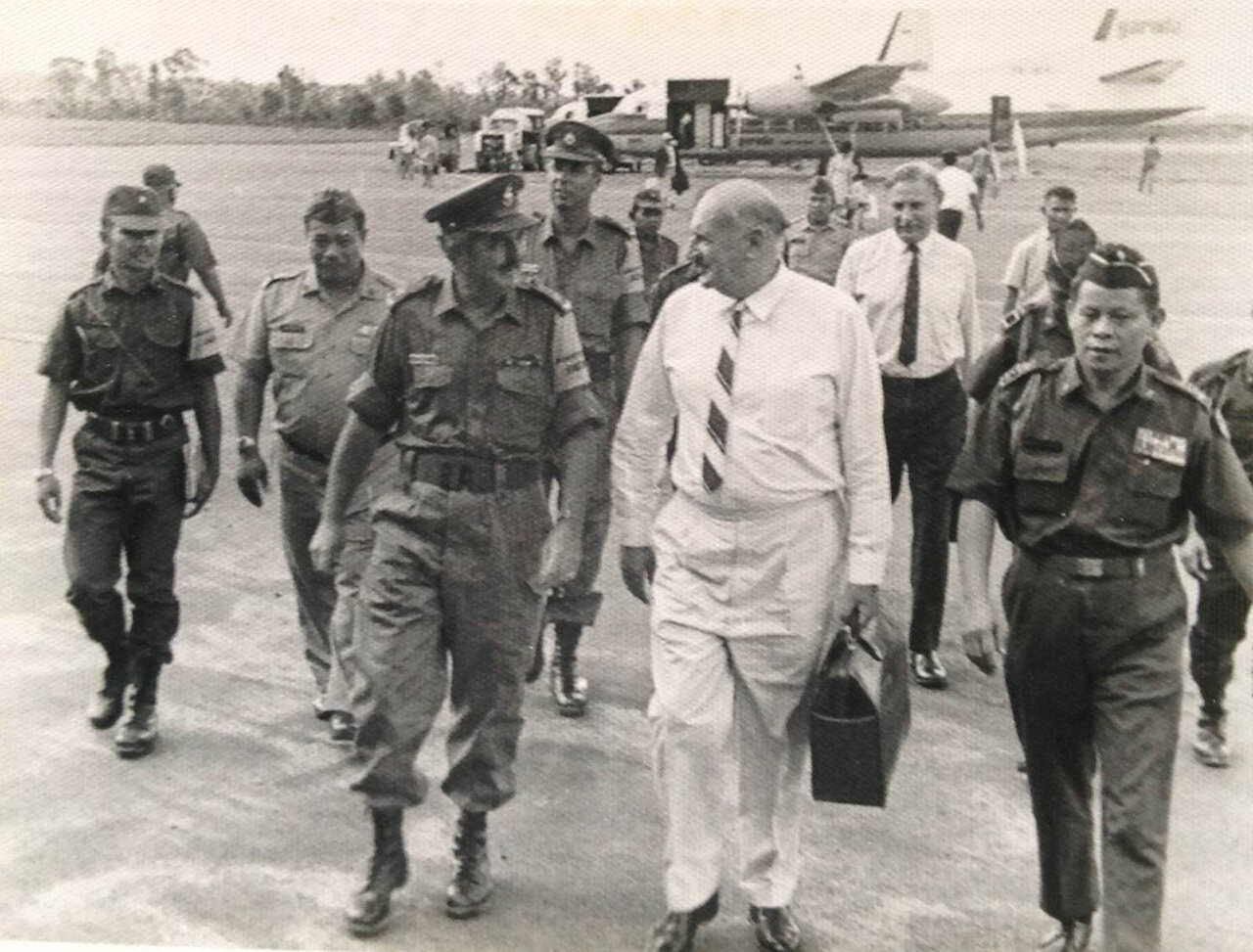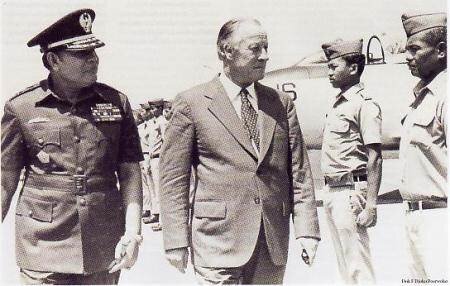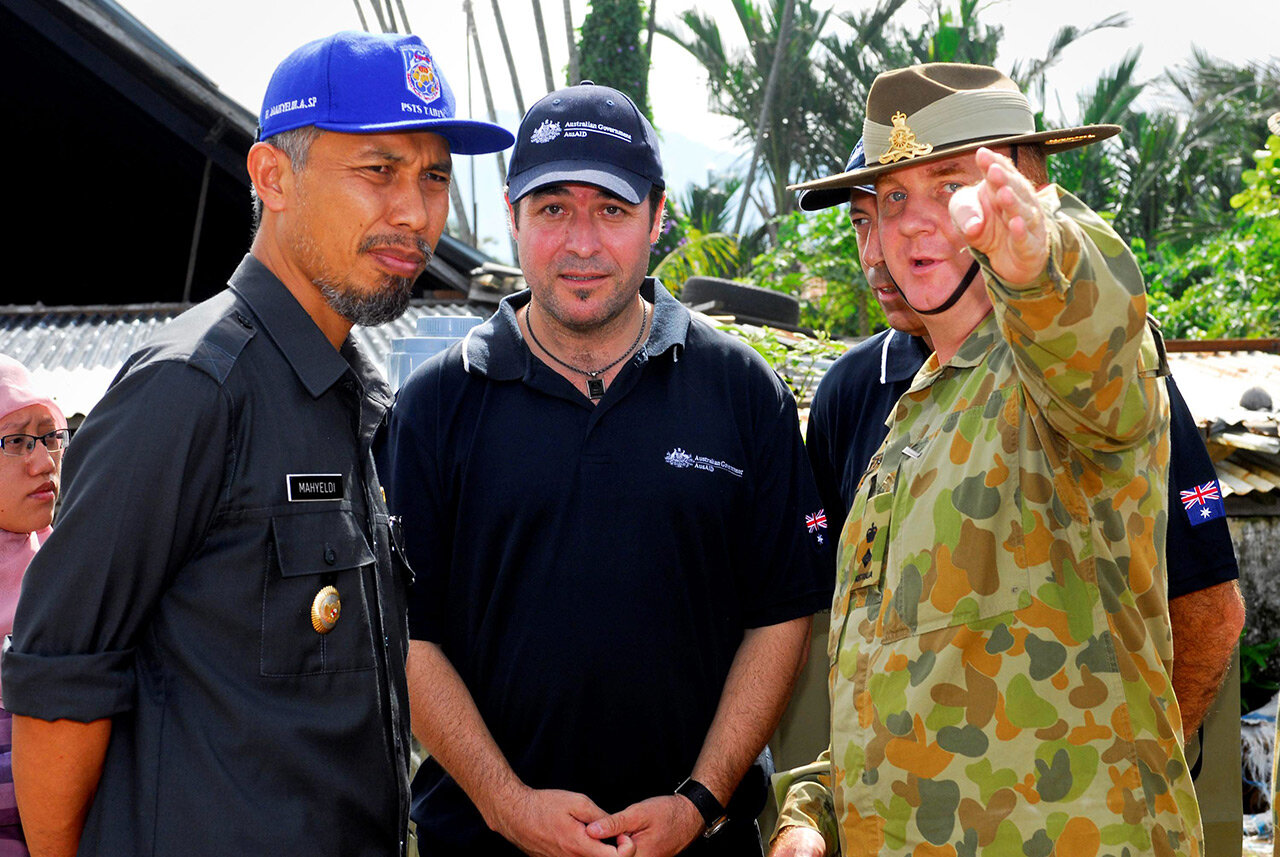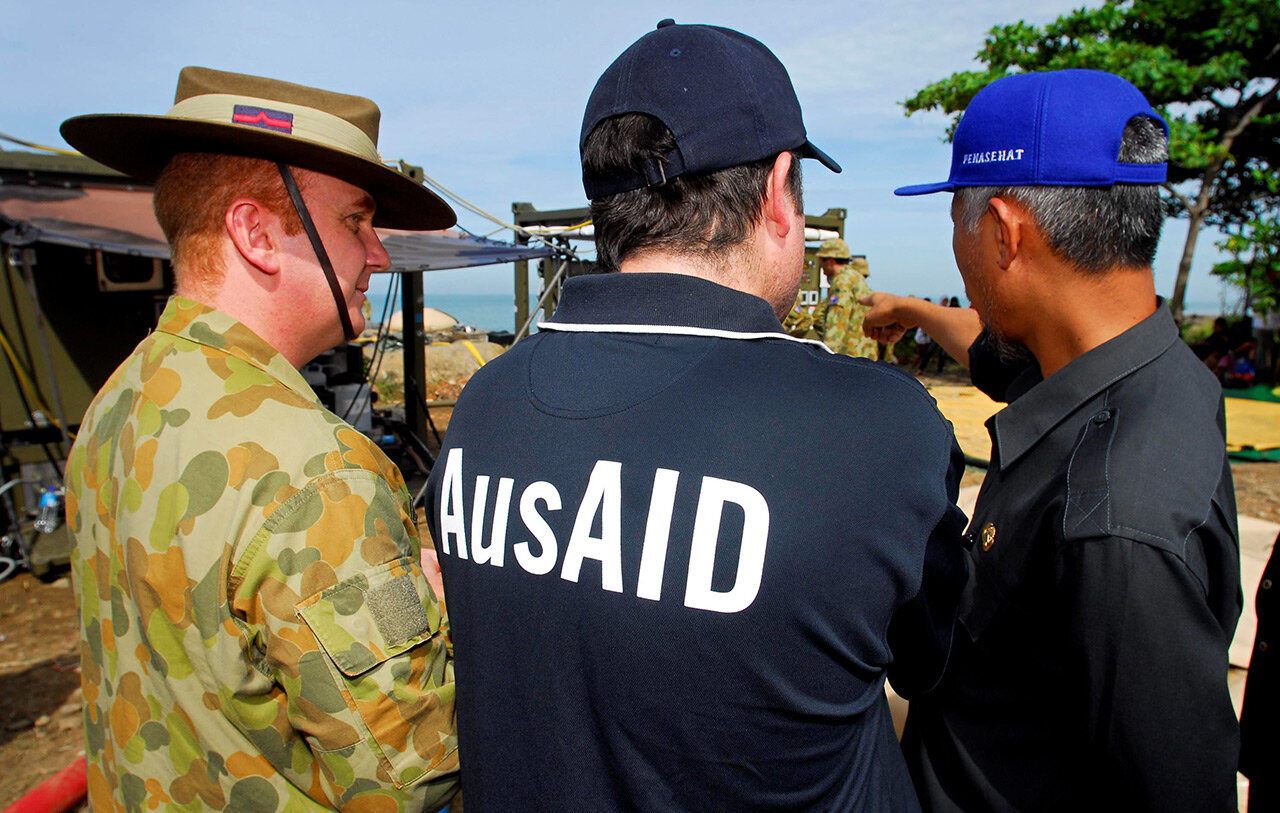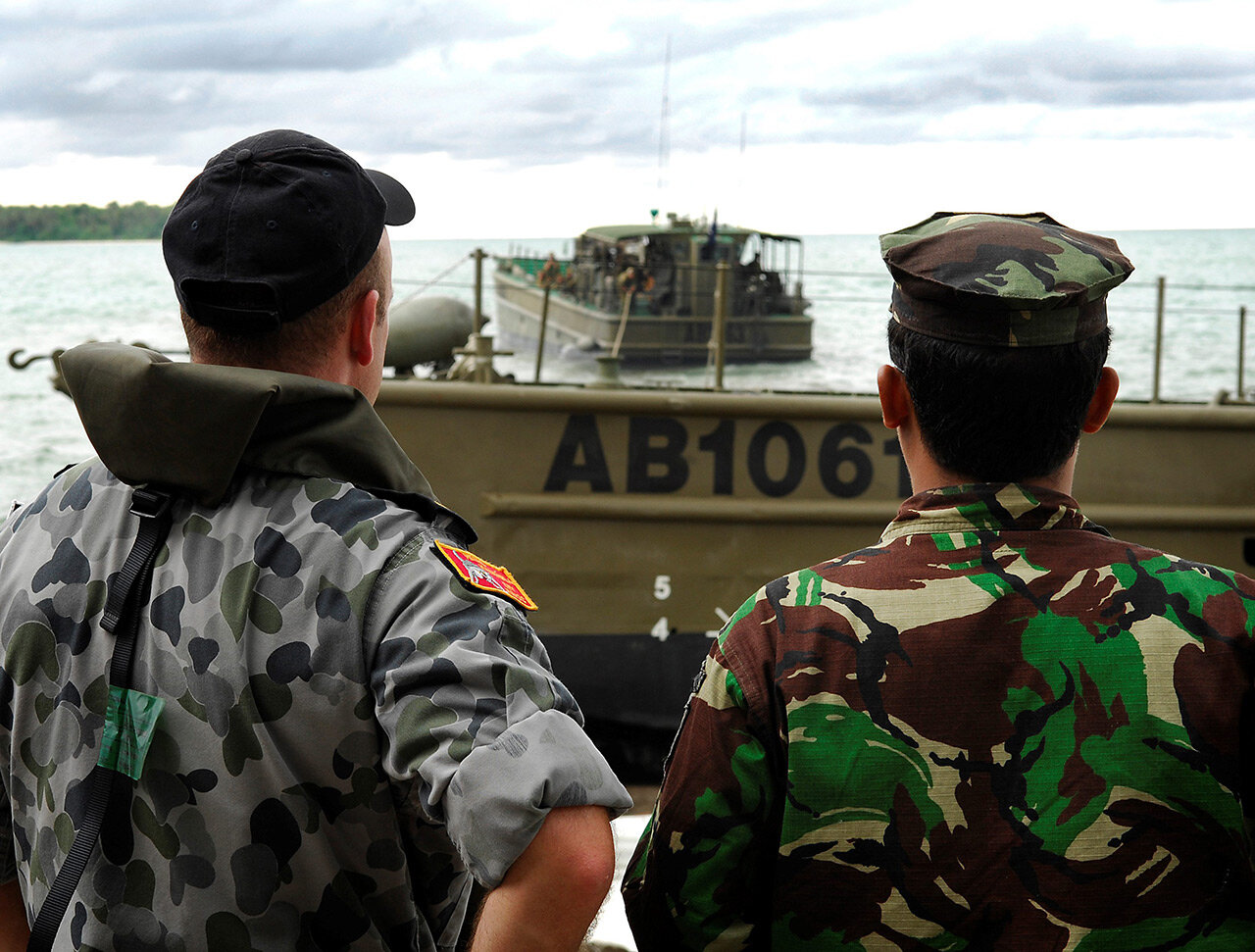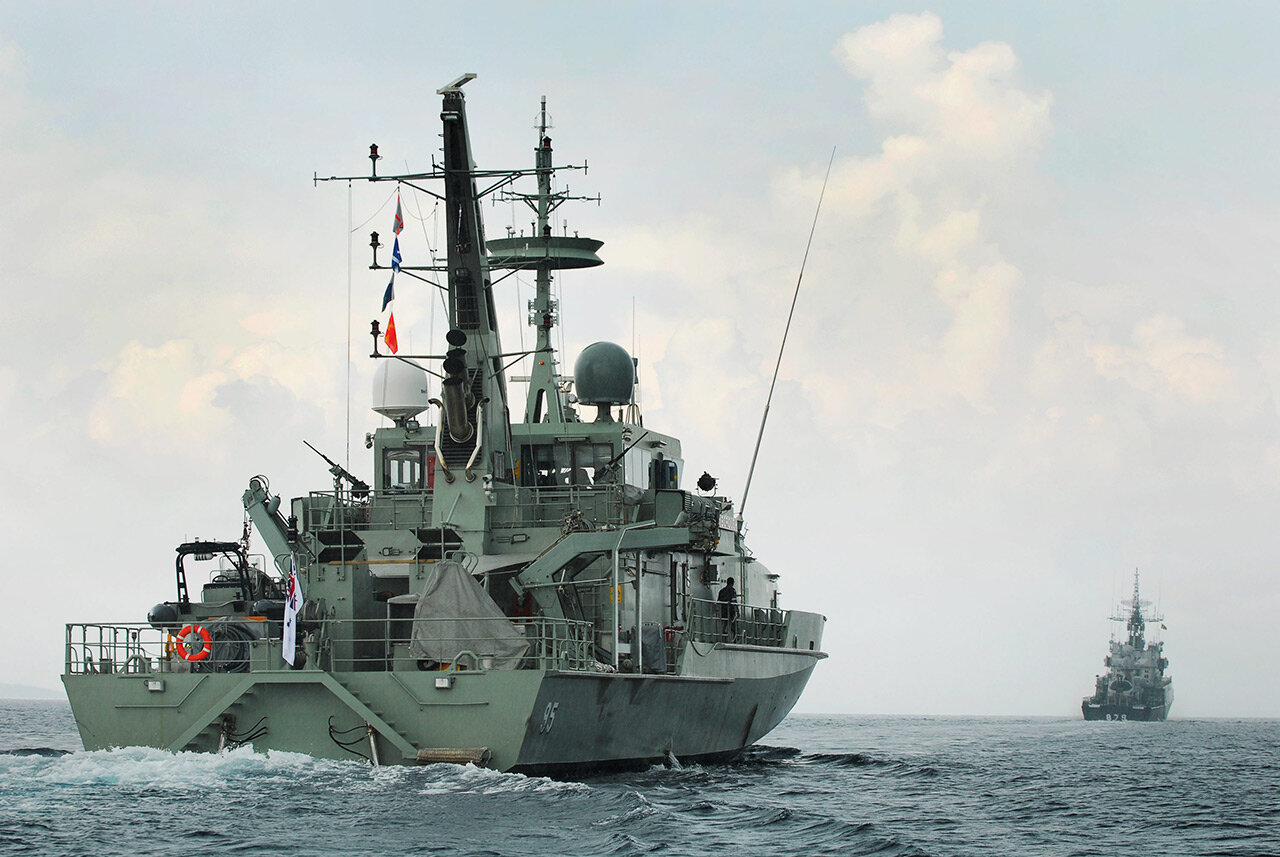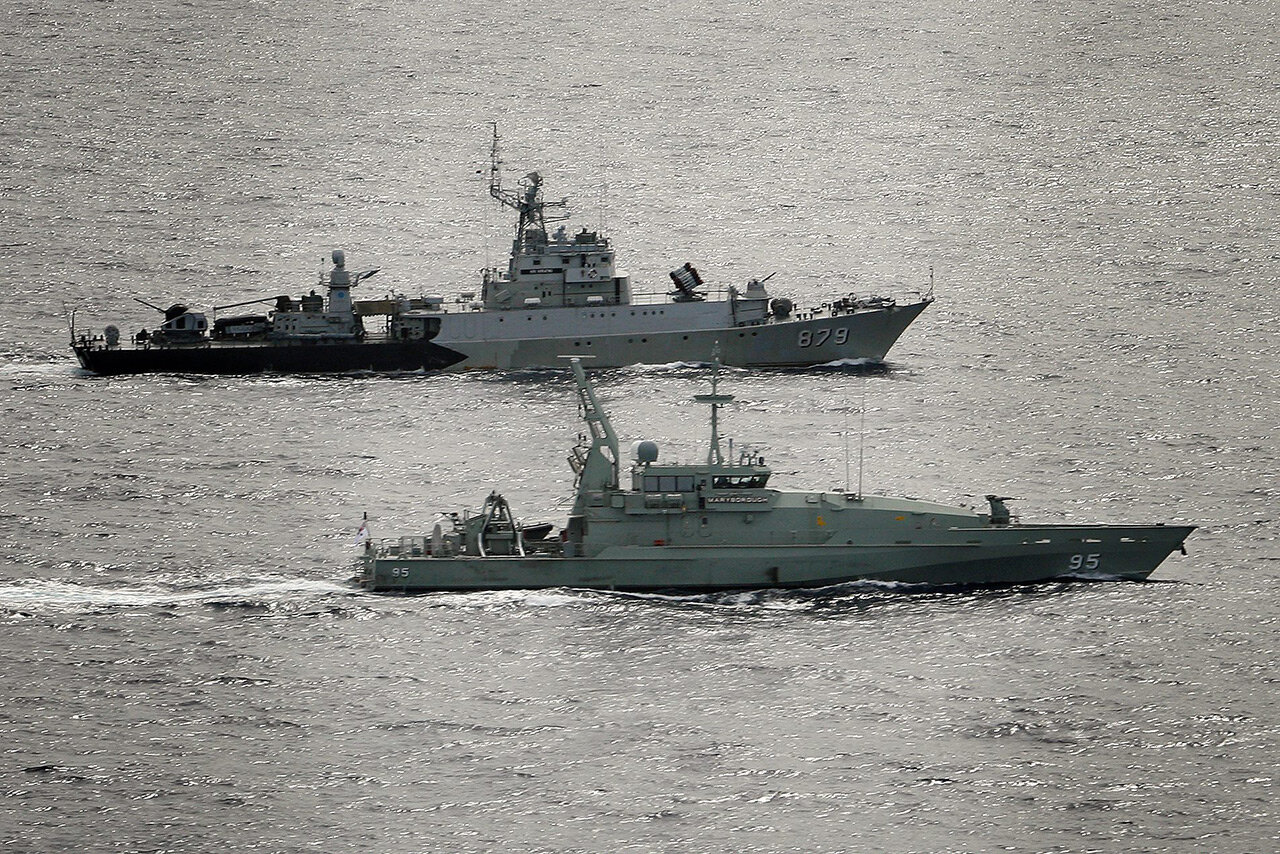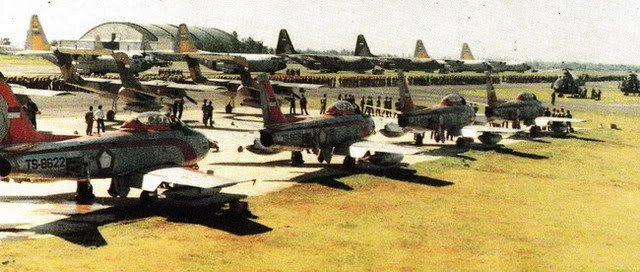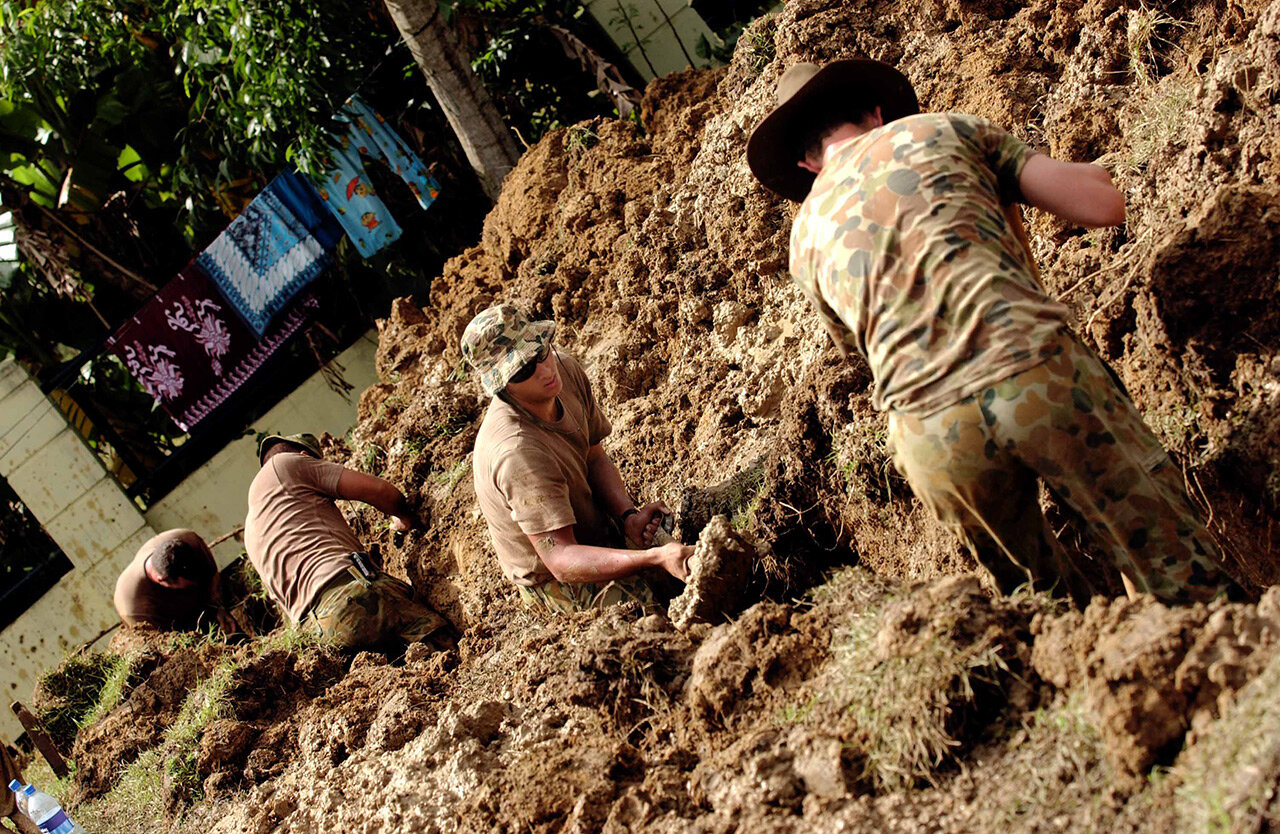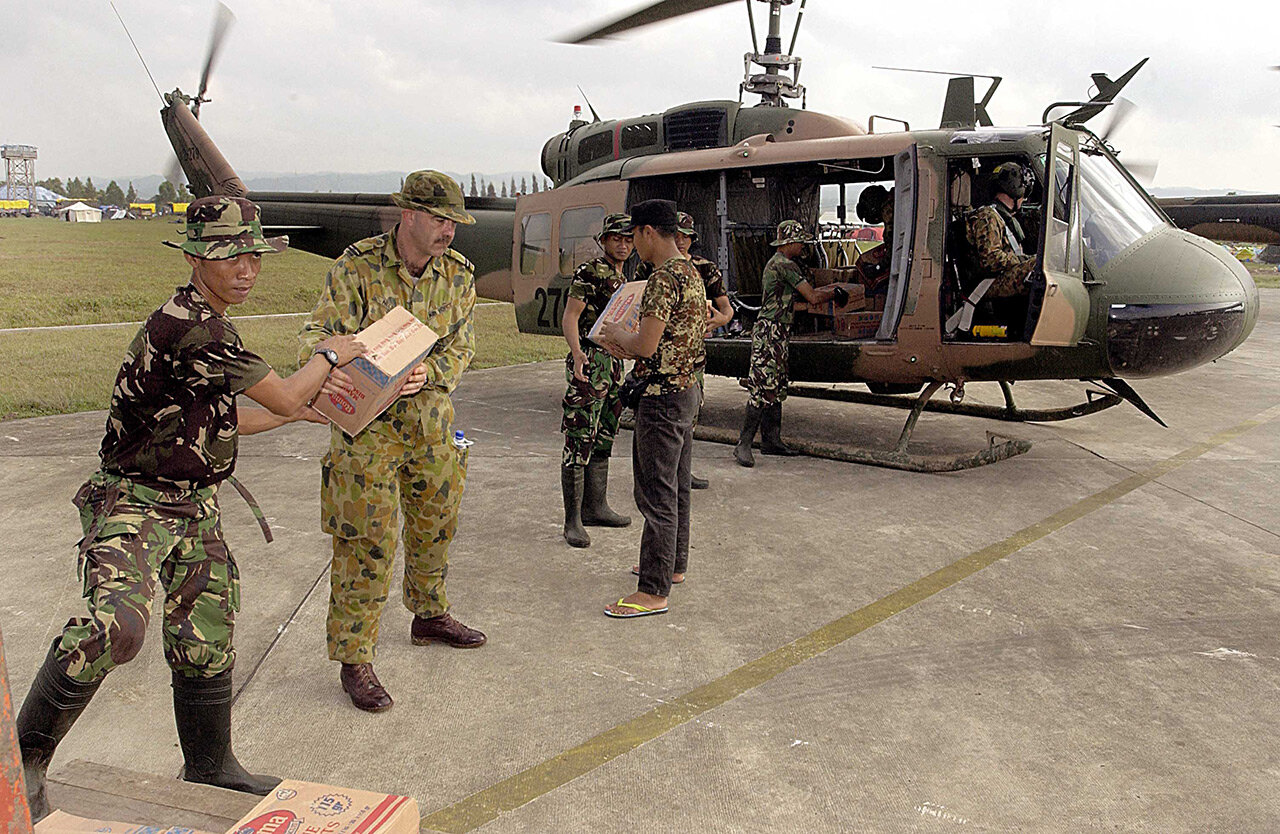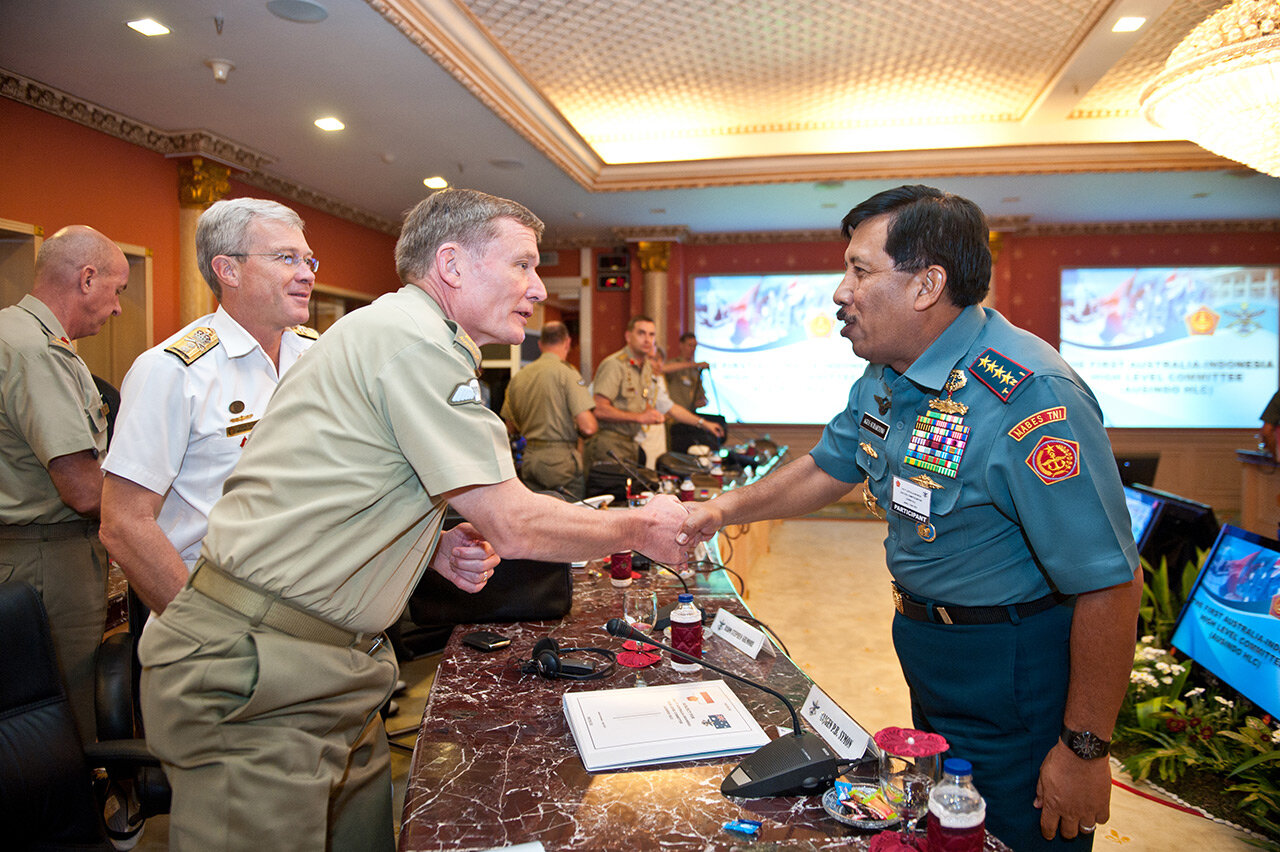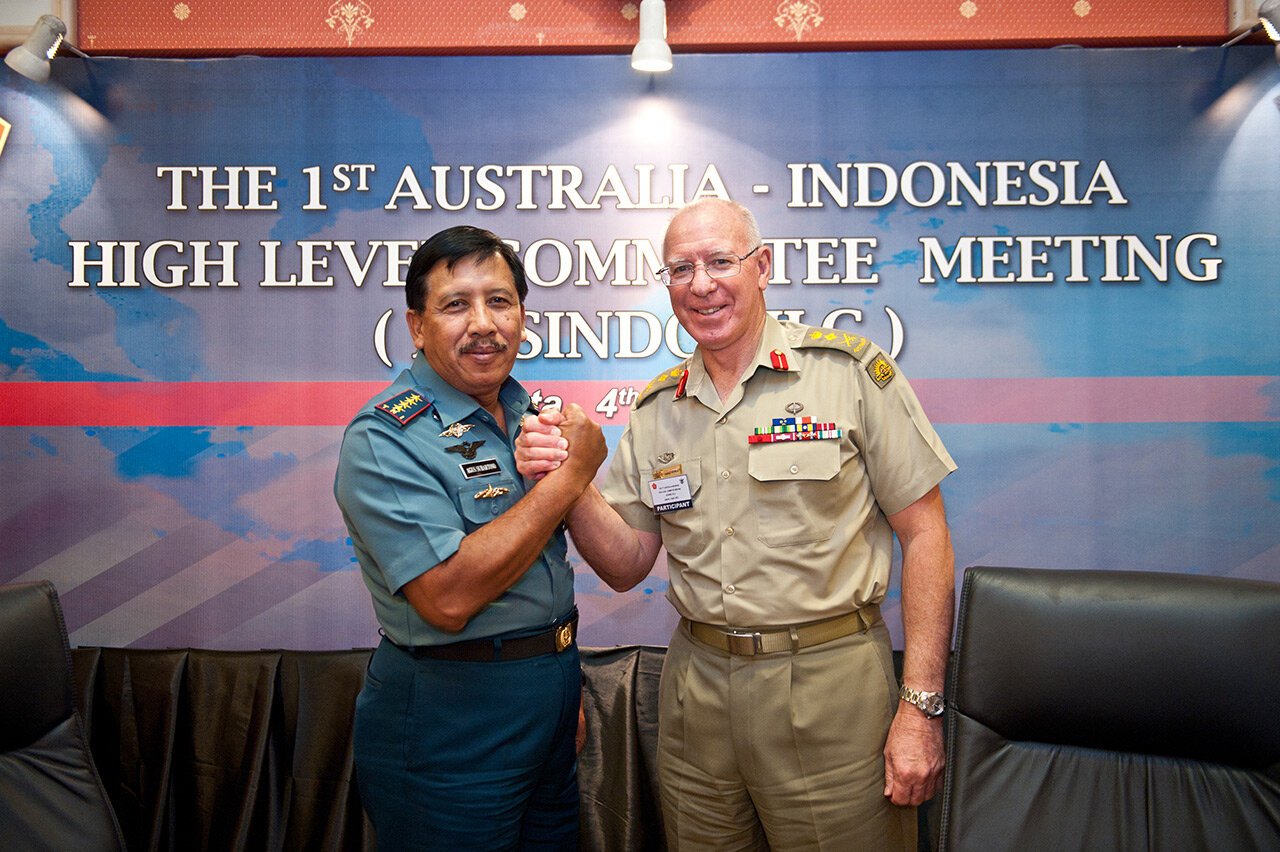Defence Cooperation
a History of Defence Cooperation
1947
Indonesia selects Australia as its representative on the United Nations Good Offices Commission. The first Australian peacekeepers deploy to Indonesia under a UN mandate to monitor the Dutch-Indonesian ceasefire. It was during the independence struggle that the Indonesian Armed Forces (TNI) was formed.
1950
Our formal bilateral defence relationship commences when Australia sends its first Defence Attaché to Indonesia.
1961-62
Major (later Major General) Tambunan is the first Indonesian student at Army Staff College Queenscliff.
1963
Lt. Colonel Colin East is the first foreign student to attend Indonesian Army Staff College.
1968
Beginning of the formal Defence Cooperation Program (DCP). The next decade saw Indonesia become, after Papua New Guinea, the largest recipient of Australian military aid. The early focus of DCP was providing equipment like Nomad aircraft and attack class patrol boats.
Early 1970s
Large groups of Indonesian Air Force technicians and pilots underwent long term (12 months+) training at the Royal Australian Air Force (RAAF) base in Williamtown, New South Wales, to support the gifting of Australian Sabre aircraft to TNI. A detachment of RAAF technicians, engineers and aircrew supported the introduction of the Sabres into TNI service at Iswahyudi Air Force Base. The detachment worked at Iswahyudi for over 12 months.
1974
The first cadet exchange took place between the Royal Military College Duntroon, and the Indonesian Military Academy, then known as AKABRI.
1975
TNI-AU (the Indonesian Air Force) contributed to the evacuation of Darwin after Cyclone Tracy with the deployment of a C-130.
1977-1981
Operation Cendrawasih. Australia conducted an air and ground survey of West Papua province at the invitation of the Indonesian government. This was one of several survey operations conducted by the Australian Defence Force (ADF) in Indonesia, but was the first to include aerial survey capabilities from the RAAF. Other survey operations were conducted in Sumatra, Kalimantan and Maluku.
1980s
This decade saw a shift towards using the DCP to develop capabilities, with increased emphasis on training and exchanges. The 1993 Strategic Review stated that “priority should be given to training and activities that foster long-term personal contact and understanding at all levels, concentrating, where possible, on potential leaders.”
2002
The Bali bombings ushered in an era of increased cooperation on counter terrorism.
2004
The ADF contributed Humanitarian Assistance/Disaster Relief operations in response to the Boxing Day tsunami in Aceh.
2006
The Lombok Treaty was signed by foreign ministers, with an emphasis on Australia’s support for Indonesia’s territorial integrity.
2009
The Commander of the ADF (CDF) and Commander of the TNI signed the Joint Statement on Indonesia-Australia Defence Cooperation.
In 2009, the ADF provided assistance to recovery operations following the 2009 Padang earthquake.
2010
The First Coordinated Patrol between the Indonesia and Australian Navies was conducted.
2011
Ikahan Alumni Pertahanan Australia-Indonesia was founded.
2012
The Defence Cooperation Arrangement was established, setting the formal framework for the ongoing bilateral defence relationship.
2013
Operation Shearwater was conducted. It was the first joint/multi-agency counter people-smuggling patrol operation, involving RAAF, TNI-AU, Border Command, and the Indonesian Maritime Security Agency (Bakorkamla, as it was known at the time). In addition, the first Australia-Indonesia High Level Committee meeting was conducted, initiated by Indonesia.
2014
The Mutual Logistics Support Arrangement between ADF and TNI was signed.
In 2014, the Joint Understanding on intelligence cooperation was also signed.
2018
The Defence Cooperation Arrangement was renewed.
